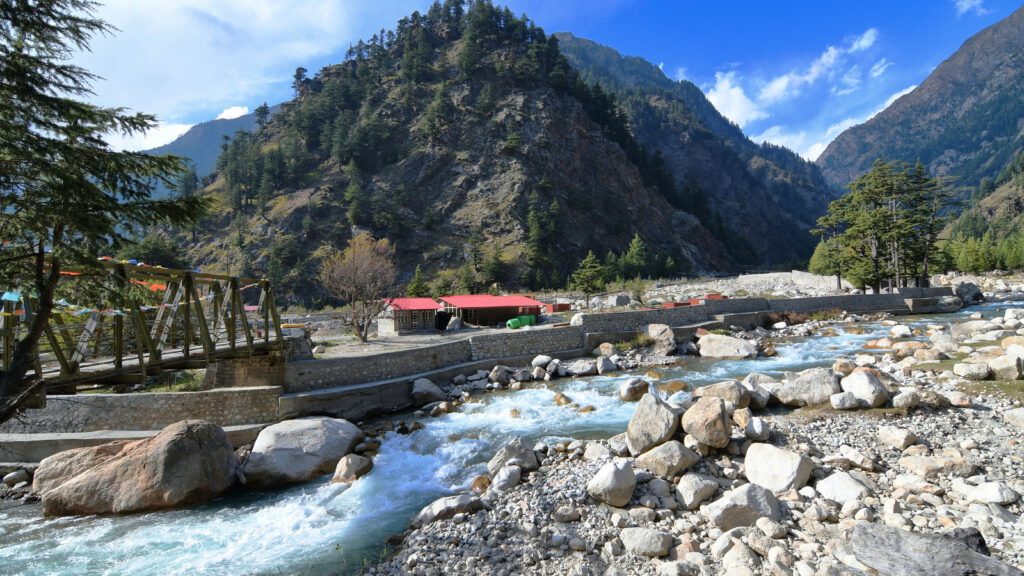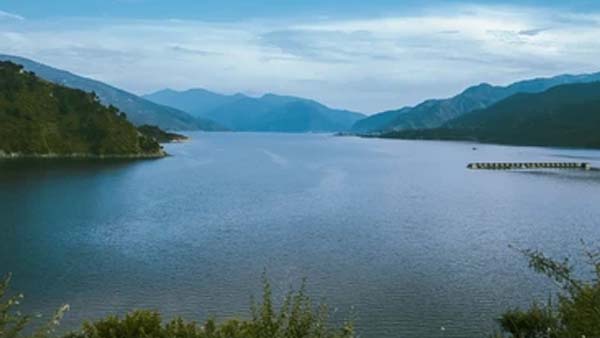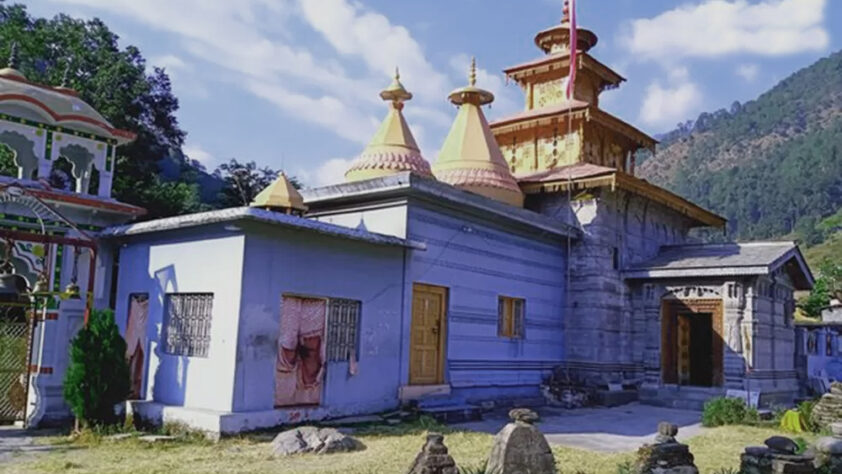
Nestled amidst the Garhwal Himalayas in the Indian state of Uttarakhand, Harsil is an enchanting village that often goes unnoticed by tourists, overshadowed by the more famous destinations like Mussoorie, Nainital, and Haridwar. Located at an altitude of around 7,860 feet (2,620 meters) above sea level, on the banks of the Bhagirathi River, Harsil is a peaceful and serene destination, known for its pristine natural beauty, apple orchards, and mythological significance.
If you are looking for an offbeat destination with breathtaking views of snow-clad mountains, lush green valleys, and sparkling rivers, Harsil is a perfect getaway. It’s a place where time seems to slow down, allowing visitors to connect with nature, spirituality, and their inner selves.
Location and How to Reach Harsil
Harsil is located in the Uttarkashi district of Uttarakhand, about 73 kilometers from Uttarkashi town and 25 kilometers before the famous Gangotri Dham. The village is part of the Chota Char Dham Yatra route, making it an ideal stop for pilgrims on their way to Gangotri.
How to Reach Harsil
By Air: The nearest airport to Harsil is Jolly Grant Airport in Dehradun, which is about 232 kilometers away. From the airport, you can hire a taxi or take a bus to reach Harsil.
By Train: The nearest railway station is Rishikesh Railway Station, around 215 kilometers from Harsil. Alternatively, you can also reach Haridwar Railway Station, which is approximately 245 kilometers away.
By Road: Harsil is well-connected by roads. You can drive or hire a taxi from Dehradun, Rishikesh, or Haridwar to reach Harsil. Regular buses and taxis also ply from Uttarkashi, Haridwar, and Rishikesh.
Best Time to Visit Harsil
The best time to visit Harsil is during the summer months (April to June) and the post-monsoon/autumn season (September to November). During these periods, the weather is pleasant, with clear skies offering stunning views of the surrounding Himalayan peaks.
Summer (April to June): The temperature ranges from 10°C to 20°C, making it perfect for sightseeing, trekking, and outdoor activities.
Monsoon (July to September): Though Harsil receives moderate rainfall, landslides and roadblocks may occur, so it’s better to avoid this season.
Autumn (September to November): This is one of the best times to visit, with cool and crisp weather. The valley comes alive with vibrant colors, and the snow-capped peaks are visible in their full glory.
Winter (December to February): Harsil experiences heavy snowfall during winter, and the temperature can drop below freezing. It becomes difficult to access the village during this time, but for snow lovers and adventure seekers, it can be a magical experience.
History and Mythological Significance
Harsil carries profound mythological and spiritual importance in Hindu tradition. Local folklore links Harsil to the Kedar Khand found in the Skanda Purana, highlighting it as a site frequented by sages and saints for meditation and spiritual practices.
One of the most renowned tales associated with Harsil involves Lord Vishnu and the River Bhagirathi. According to the story, Vishnu took on the guise of a stone to pacify the fiercely flowing Bhagirathi River, which was causing destruction. This stone, referred to as Laxmi Narayan Shila, is still visible at the riverbank.
Moreover, Harsil serves as a crucial waypoint for pilgrims en route to Gangotri, which is considered one of the holiest destinations in Hinduism. Legend has it that Sage Markandeya also meditated in this area.
Things to Do in Harsil
Harsil is not only a beautiful retreat but also provides a wide range of activities for nature enthusiasts, thrill-seekers, and those on a spiritual quest.
1. Visit the Gangotri Temple
Harsil is situated just 25 kilometers from Gangotri, which is one of the four revered shrines in the Chota Char Dham Yatra. Gangotri marks the source of the River Ganga, and visiting the Gangotri Temple is deemed extremely sacred by Hindus. Each year, the temple, dedicated to Goddess Ganga, draws thousands of devotees.
2. Explore the Apple Orchards
Harsil is renowned for its abundant apple orchards, celebrated for the exceptional taste and quality of the apples produced there. Visitors can enjoy a leisurely walk among the orchards and have the opportunity to buy some fresh apples to take home as mementos.
3. Trekking and Nature Walks
Harsil is a paradise for both trekkers and nature enthusiasts. The verdant forests surrounding this area abound with a variety of flora and fauna, while a multitude of trekking trails meander through charming pine woods, colorful alpine meadows, and breathtaking waterfalls. Some of the notable trekking routes near Harsil include:
Dharali to Mukhwas Village Trek : This trek leads to Mukhwas, the winter abode of Goddess Ganga, and offers stunning views of the valley.
Sattal Trek : Located not far from Harsil, Sattal consists of a cluster of seven lakes, celebrated for their magnificent scenery and tranquil ambiance.
Kedartal Trek: Designed for seasoned adventurers, the Kedartal trek is a demanding journey to a high-altitude lake in the Gangotri region, providing spectacular panoramas of the Thalay Sagar, Brigupanth, and Jogin Peaks.
4. Wilson Cottage
The Wilson Cottage is a historic landmark located in Harsil. Constructed by Frederick E. Wilson, a British officer reputed to have discovered Harsil in the 19th century, this cottage holds great significance. Wilson developed a deep affection for the area and pioneered apple cultivation in the region. His legacy endures through the flourishing apple orchards, and the cottage itself continues to be an important part of Harsil’s heritage.
5. Visit Dharali Village
Situated just a few kilometers from Harsil is Dharali, a charming village encompassed by mountains and forests. Renowned for its temples, stunning scenery, and serene ambiance, Dharali hosts the Mukhwa Temple, which serves as the winter dwelling for Goddess Ganga during the closure of the Gangotri Temple due to heavy snowfall.
6. Bird Watching and Wildlife
The thick woods surrounding Harsil provide habitat for a diverse array of wildlife, such as musk deer, barking deer, Himalayan black bears, and monal pheasants. Birdwatching is a favored pastime in Harsil due to the presence of numerous rare Himalayan bird species.
Where to Stay in Harsil
Harsil provides a range of lodging options, including affordable guesthouses, delightful homestays, and upscale camps. As it is a quaint village with a limited selection of hotels and resorts, it is advisable to secure your reservations in advance, particularly during the busy tourist seasons.
GMVN Guest House
Managed by the Garhwal Mandal Vikas Nigam (GMVN), this guest house is an excellent choice for budget-conscious travelers. It provides essential amenities along with breathtaking views of the nearby mountains.
Homestays
Harsil features several homestays that provide a distinct chance to immerse yourself in the local hospitality and culture. By staying with a host family, you’ll gain valuable insights into the traditions and way of life of the area’s inhabitants.
Luxury Camps
If you’re in search of a more upscale experience, several eco-friendly camps and resorts in and around Harsil provide contemporary amenities while embracing the beauty of nature. These establishments are perfect for individuals seeking to relax in the tranquil surroundings of the Himalayas without sacrificing comfort.
Best Nearby Treks from Harsil
- Distance from Harsil: Approximately 40 km to the base camp (Sankri)
- Trek Duration: 4-5 days
- Difficulty Level: Easy to Moderate
- Altitude: 12,500 ft
- Best Time to Visit: December to April (for snow trekking) and September to November
- Distance from Harsil: 25 km to Barsu (base village)
- Trek Duration: 3-4 days
- Difficulty Level: Easy to Moderate
- Altitude: 11,181 ft
- Best Time to Visit: December to February (snow trek) and May to October (lush green meadows)
- Distance from Harsil: 20 km to Gangotri
- Trek Duration: 5-6 days
- Difficulty Level: Moderate
- Altitude: 14,640 ft
- Best Time to Visit: May to October
4. Dodital Lake Trek
- Distance from Harsil: 45 km to Sangamchatti (starting point)
- Trek Duration: 4-5 days
- Difficulty Level: Easy to Moderate
- Altitude: 10,000 ft
- Best Time to Visit: March to June and September to November
- Distance from Harsil: 20 km to Gangotri
- Trek Duration: 6-7 days
- Difficulty Level: Moderate to Challenging
- Altitude: 16,000 ft
- Best Time to Visit: May to October
- Distance from Harsil: 40 km to Sankri (base village)
- Trek Duration: 6-7 days
- Difficulty Level: Moderate
- Altitude: 11,700 ft
- Best Time to Visit: March to June and September to December
8. Pindari Glacier Trek
- Distance from Harsil: 150 km (starting from Loharkhet in Bageshwar district)
- Trek Duration: 7-8 days
- Difficulty Level: Moderate
- Altitude: 12,300 ft
- Best Time to Visit: May to June and September to October
9. Khatling Glacier Trek
- Distance from Harsil: 60 km to Ghuttu (starting point)
- Trek Duration: 8-9 days
- Difficulty Level: Challenging
- Altitude: 14,000 ft
- Best Time to Visit: May to October
Conclusion: An Ideal Fusion of Nature, Spirituality, and Adventure
Harsil is an ideal getaway for anyone wishing to break free from the chaos of urban living and immerse themselves in nature. Regardless of whether you’re a spiritual enthusiast, a nature aficionado, or an adventure seeker, Harsil caters to all. Its serene ambiance, warm-hearted residents, and pristine natural landscapes establish it as a genuine hidden treasure in Uttarakhand.
If you’re organizing a visit to Uttarakhand, be sure to seize the chance to discover Harsil, a destination where spirituality intertwines with adventure and the mountains narrate tales of yesteryears.


